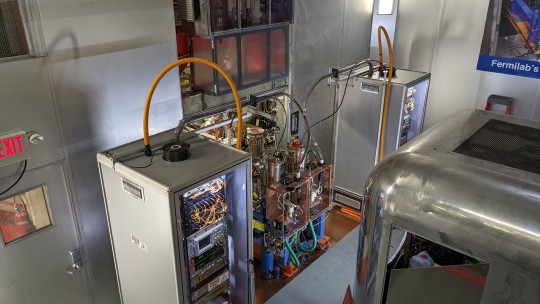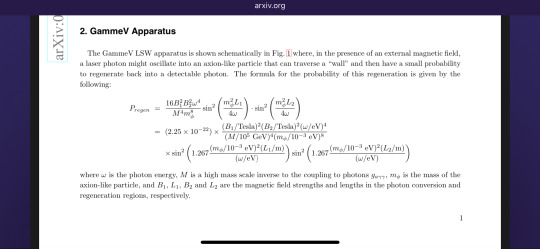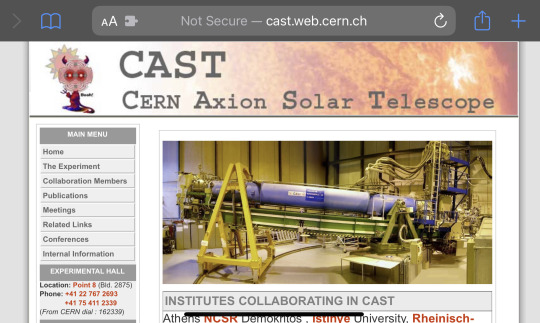#fermilab
Photo
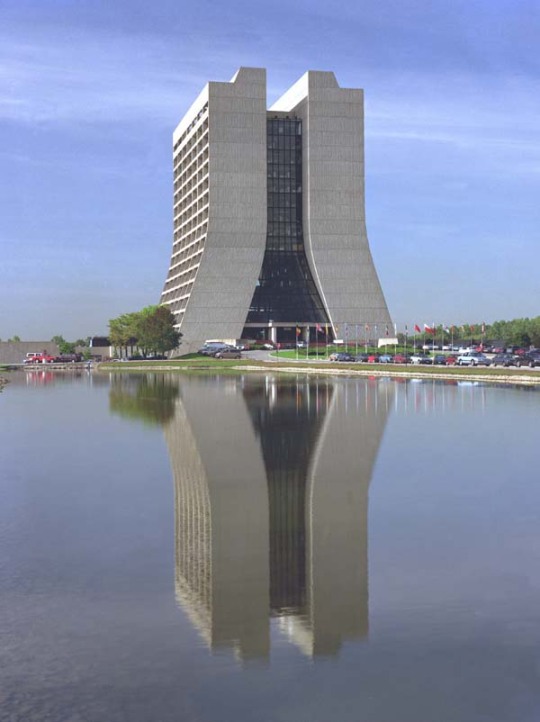
Alan H. Rider, Wilson Hall (formerly the Central Laboratory Building), Fermi National Accelerator Laboratory (Fermilab), Batavia, Illinois, 1971-74.
#architecture#brutalism#science#particle physics#Alan H. Rider#Wilson Hall#Central Laboratory Building#Fermilab#Batavia#Illinois#USA#1970s
275 notes
·
View notes
Text
instagram
🇺🇸
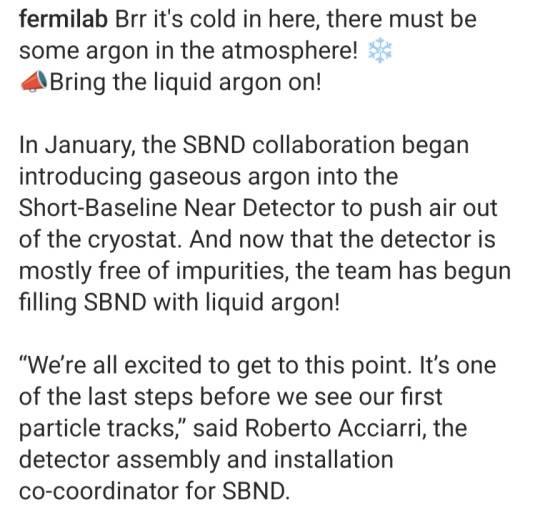


❄️
2 notes
·
View notes
Text



An exceptional archer reveals a proton particle's secrets using ghostly neutrino arrows.
MINERvA is a particle physics experiment at @Fermilab that's "found a novel way to see and understand proton structure" via a neutrino-scattering technique:
"A new way to explore proton’s structure with neutrinos yields first results"
Concept & illustration by me for Symmetry Magazine / Sandbox Studio
Sketches:

B is missing :) it's a secret... for now.
#science#physics#neutrinos#sciart#stylized#portfolio#olena shmahalo#natureintheory#published#2D#painting#noai#science illustration#science art#particle physics#fermilab#MINERvA#digital painting#digital art#human artist#sketches#concept art#VFX#2d vfx
17 notes
·
View notes
Text
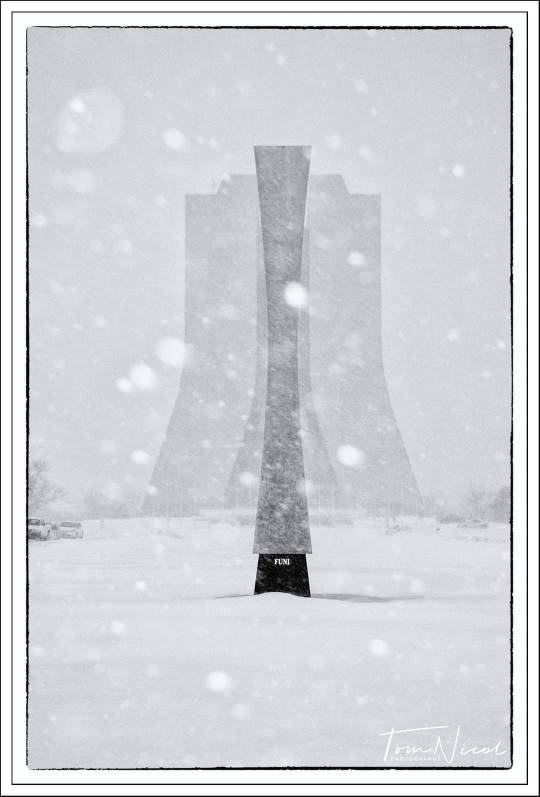
Photograph of Fermilab by Tom Nicol.
2 notes
·
View notes
Link
One of my favorite youtube channels.
I don’t have any academic background in physics, so all I know about it (or think I know) comes from books, online articles and Scientific American (one of my favorite mags of all time).
And now I’ve added this excellent video series to my learning routines. The mini lectures are lucid, fun to watch, and strike a perfect balance between the simple and the overly complex.
2 notes
·
View notes
Text
instagram

0 notes
Text
Materia oscura puede ser un universo espejo deformado, sugieren científicos

Materia oscura puede ser un universo espejo deformado, sugieren científicos
La materia oscura podría ser un universo espejo deformado, de acuerdo a una investigación científica.
LEE MÁS
0 notes
Text
Fermilab y el Sincrotrón: Un viaje a las profundidades de la materia
Fermilab, ubicado cerca de Chicago, Illinois, es un laboratorio de física de partículas de renombre mundial, hogar del acelerador de partículas más potente del mundo, el Tevatron. Este enorme complejo alberga una variedad de instalaciones, pero la joya de la corona es, sin duda, el Sincrotrón Main Injector.
¿Qué es un sincrotrón?Imagina un anillo gigante de 687 metros de diámetro, vacío y…
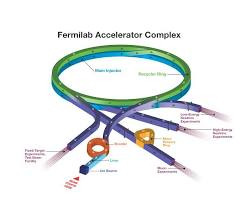
View On WordPress
#Ciencias y Tecnologías#Estudios#fermilab#Fisica#futuro#Medicina#Motores#Nave espacial#partículas#Propulsión#sistema#Universo
0 notes
Text
How one particle could unlock the Universe’s mysterious ‘fifth force’
Another article (the first in a while) for BBC Science Focus.
View On WordPress
0 notes
Text
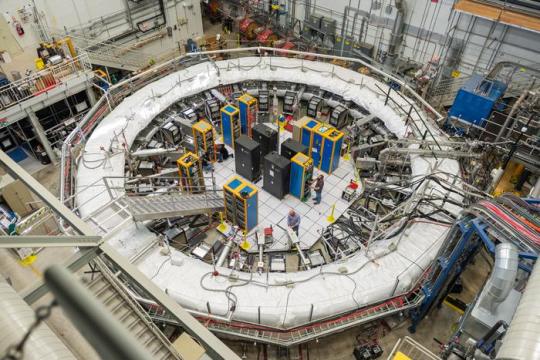
Muon g-2 doubles down with latest measurement, explores uncharted territory in search of new physics
Physicists now have a brand-new measurement of a property of the muon called the anomalous magnetic moment that improves the precision of their previous result by a factor of 2.
An international collaboration of scientists working on the Muon g-2 experiment at the U.S. Department of Energy’s Fermi National Accelerator Laboratory announced the much-anticipated updated measurement on Aug. 10. This new value bolsters the first result they announced in April 2021 and sets up a showdown between theory and experiment over 20 years in the making.
“We’re really probing new territory. We’re determining the muon magnetic moment at a better precision than it has ever been seen before,” said Brendan Casey, a senior scientist at Fermilab who has worked on the Muon g-2 experiment since 2008.
Physicists describe how the universe works at its most fundamental level with a theory known as the Standard Model. By making predictions based on the Standard Model and comparing them to experimental results, physicists can discern whether the theory is complete — or if there is physics beyond the Standard Model.
Muons are fundamental particles that are similar to electrons but about 200 times as massive. Like electrons, muons have a tiny internal magnet that, in the presence of a magnetic field, precesses or wobbles like the axis of a spinning top. The precession speed in a given magnetic field depends on the muon magnetic moment, typically represented by the letter g; at the simplest level, theory predicts that g should equal 2.
The difference of g from 2 — or g minus 2 — can be attributed to the muon’s interactions with particles in a quantum foam that surrounds it. These particles blink in and out of existence and, like subatomic “dance partners,” grab the muon’s “hand” and change the way the muon interacts with the magnetic field. The Standard Model incorporates all known “dance partner” particles and predicts how the quantum foam changes g. But there might be more. Physicists are excited about the possible existence of as-yet-undiscovered particles that contribute to the value of g-2 — and would open the window to exploring new physics.
The new experimental result, based on the first three years of data, announced by the Muon g-2 collaboration is:
g-2 = 0.00233184110 +/- 0.00000000043 (stat.) +/- 0.00000000019 (syst.)
The measurement of g-2 corresponds to a precision of 0.20 parts per million. The Muon g-2 collaboration describes the result in a paper that they submitted today to Physical Review Letters.
With this measurement, the collaboration has already reached their goal of decreasing one particular type of uncertainty: uncertainty caused by experimental imperfections, known as systematic uncertainties.
“This measurement is an incredible experimental achievement,” said Peter Winter, co-spokesperson for the Muon g-2 collaboration. “Getting the systematic uncertainty down to this level is a big deal and is something we didn’t expect to achieve so soon.”
While the total systematic uncertainty has already surpassed the design goal, the larger aspect of uncertainty — statistical uncertainty — is driven by the amount of data analyzed. The result announced today adds an additional two years of data to their first result. The Fermilab experiment will reach its ultimate statistical uncertainty once scientists incorporate all six years of data in their analysis, which the collaboration aims to complete in the next couple of years.
To make the measurement, the Muon g-2 collaboration repeatedly sent a beam of muons into a 50-foot-diameter superconducting magnetic storage ring, where they circulated about 1,000 times at nearly the speed of light. Detectors lining the ring allowed scientists to determine how rapidly the muons were precessing. Physicists must also precisely measure the strength of the magnetic field to then determine the value of g-2.
The Fermilab experiment reused a storage ring originally built for the predecessor Muon g-2 experiment at DOE’s Brookhaven National Laboratory that concluded in 2001. In 2013, the collaboration transported the storage ring 3,200 miles from Long Island, New York, to Batavia, Illinois. Over the next four years, the collaboration assembled the experiment with improved techniques, instrumentation and simulations. The main goal of the Fermilab experiment is to reduce the uncertainty of g-2 by a factor of four compared to the Brookhaven result.
“Our new measurement is very exciting because it takes us well beyond Brookhaven’s sensitivity,” said Graziano Venanzoni, professor at the University of Liverpool affiliated with the Italian National Institute for Nuclear Physics, Pisa, and co-spokesperson of the Muon g-2 experiment at Fermilab.
In addition to the larger data set, this latest g-2 measurement is enhanced by updates to the Fermilab experiment itself. “We improved a lot of things between our first year of taking data and our second and third year,” said Casey, who recently finished his term as co-spokesperson with Venanzoni. “We were constantly making the experiment better.”
The experiment was “really firing on all cylinders” for the final three years of data-taking, which came to an end on July 9, 2023. That’s when the collaboration shut off the muon beam, concluding the experiment after six years of data collection. They reached the goal of collecting a data set that is more than 21 times the size of Brookhaven’s data set.
Physicists can calculate the effects of the known Standard Model “dance partners” on muon g-2 to incredible precision. The calculations consider the electromagnetic, weak nuclear and strong nuclear forces, including photons, electrons, quarks, gluons, neutrinos, W and Z bosons, and the Higgs boson. If the Standard Model is correct, this ultra-precise prediction should match the experimental measurement.
Calculating the Standard Model prediction for muon g-2 is very challenging. In 2020, the Muon g-2 Theory Initiative announced the best Standard Model prediction for muon g-2 available at that time. But a new experimental measurement of the data that feeds into the prediction and a new calculation based on a different theoretical approach — lattice gauge theory — are in tension with the 2020 calculation. Scientists of the Muon g-2 Theory Initiative aim to have a new, improved prediction available in the next couple of years that considers both theoretical approaches.
The Muon g-2 collaboration comprises close to 200 scientists from 34 institutions in seven countries and includes nearly 40 students so far who have received their doctorates based on their work on the experiment. Collaborators will now spend the next couple of years analyzing the final three years of data. “We expect another factor of two in precision when we finish,” said Venanzoni.
The collaboration anticipates releasing their final, most precise measurement of the muon magnetic moment in 2025 — setting up the ultimate showdown between Standard Model theory and experiment. Until then, physicists have a new and improved measurement of muon g-2 that is a significant step toward its final physics goal.
The Muon g-2 experiment is supported by the Department of Energy (US); National Science Foundation (US); Istituto Nazionale di Fisica Nucleare (Italy); Science and Technology Facilities Council (UK); Royal Society (UK); European Union’s Horizon 2020; National Natural Science Foundation of China; MSIP, NRF and IBS-R017-D1 (Republic of Korea); and German Research Foundation (DFG).
Fermilab is America’s premier national laboratory for particle physics research. A U.S. Department of Energy Office of Science laboratory, Fermilab is located near Chicago, Illinois, and operated under contract by the Fermi Research Alliance LLC. Visit Fermilab’s website at https://www.fnal.gov and follow us on Twitter @Fermilab.
The DOE Office of Science is the single largest supporter of basic research in the physical sciences in the United States and is working to address some of the most pressing challenges of our time. For more information, visit https://science.energy.gov.
IMAGE....The announcement on Aug. 10, 2023 is the second result from the experiment at Fermilab , which is twice as precise than the first result announced on April 7, 2021. CREDIT Ryan Postel, Fermilab
3 notes
·
View notes
Text
instagram
🇺🇸
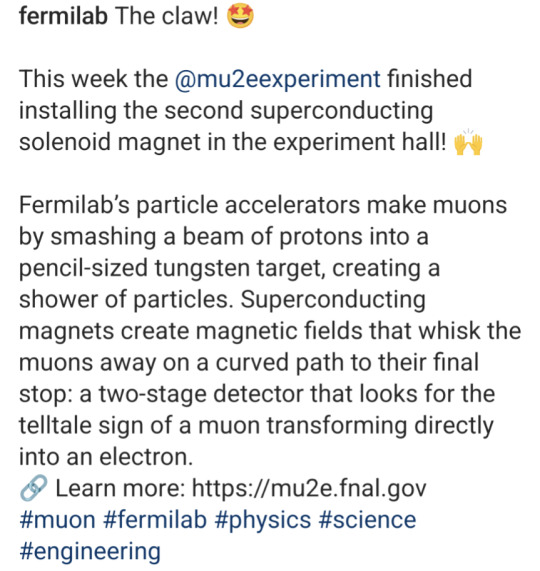
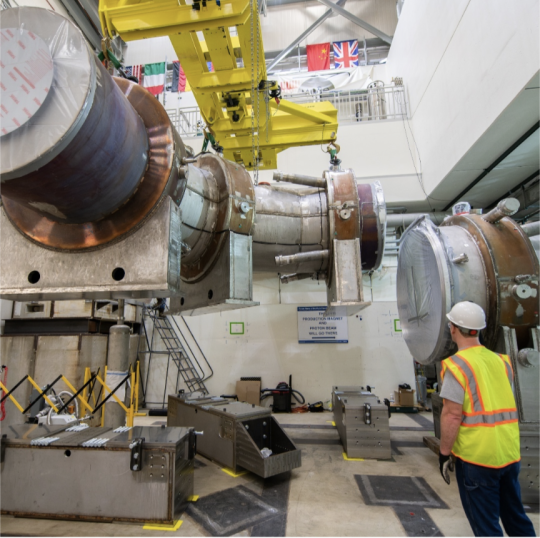
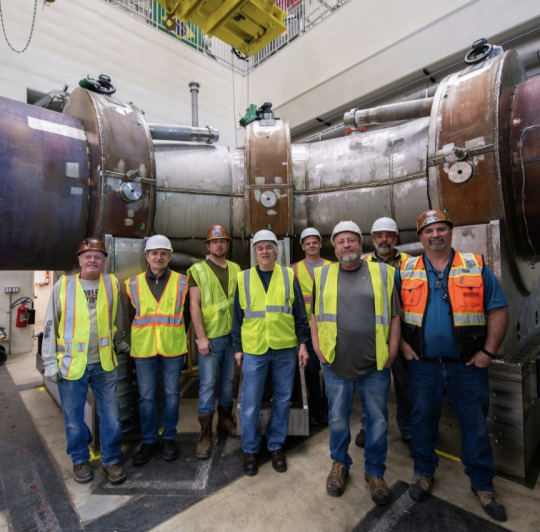
1 note
·
View note
Text
Quinta forza fondamentale per l'unificazione del Tutto

L’intuizione di una quinta forze diventa sempre più reale. L’allettante teoria secondo cui potrebbe esistere una quinta forza della natura ha ricevuto una spinta grazie all’oscillazione inaspettata di una particella subatomica, hanno rivelato i fisici.
Secondo l’attuale comprensione, ci sono quattro forze fondamentali in natura, tre delle quali – la forza elettromagnetica e le forze nucleari forti e deboli – sono spiegate dal modello standard della fisica delle particelle, quindi sono prevedibili sulla base di questa legge e si parla di “unificazione delle forze”.
Il modello però non spiega l’altra forza fondamentale nota, la gravità, o meglio la sua spiegazione non è completa e richiede la famosa materia oscura, che costuirebbe il 27% dell’universo.
Ora i ricercatori hanno detto che potrebbe esserci un’altra, quinta, fondamentale forza della natura, che aiuterebbe a spiegare le altre quattro.
Il dottor Mitesh Patel, dell’Imperial College di Londra, ha dichiarato: “Stiamo parlando di una quinta forza perché non possiamo necessariamente spiegare il comportamento con le quattro che conosciamo”.

I dati provengono da esperimenti presso la struttura dell’acceleratore di particelle statunitense del Fermilab, che ha esplorato il modo in cui le particelle subatomiche chiamate muoni – simili agli elettroni ma circa 200 volte più pesanti – si muovono in un campo magnetico.
Patel dice che i muoni si comportano un po’ come la trottola di un bambino, ruotando attorno all’asse del campo magnetico. Tuttavia, quando i muoni si muovono, oscillano. La frequenza di tale oscillazione dovrebbe essere prevista dal modello standard della fisica. Bisognerebbe essere in grado di prevederle.
Ma i risultati sperimentali del FermiLab non sembrano corrispondere a queste previsioni.
Il prof. Jon Butterworth dell’University College di Londra, che lavora all’esperimento Atlas al Large Hadron Collider (LHC) del Cern, ha dichiarato: “Le oscillazioni sono dovute al modo in cui il muone interagisce con un campo magnetico. Possono essere calcolati in modo molto preciso nel modello standard, ma tale calcolo coinvolge loop quantistici, con particelle note che compaiono in quei loop.
“Se le misurazioni non si allineano con la previsione, potrebbe essere un segno che c’è qualche particella sconosciuta che appare nei circuiti – che potrebbe, ad esempio, essere il portatore di una quinta forza”.
I risultati seguono il lavoro precedente di FermiLab che ha mostrato risultati simili. Se fossero ulteriormente confermati ci sarebbe la prova che qualcosa interagisce con queste particelle, cioè un’altra forza non prevista dal modello standard. Si tratta però di costruire un esperimento ad hoc per rilevare e misurare questa forza, e questo è il lavoro della fisica sperimentale.
Gli esperimenti al Fermilab non sono gli unici a suggerire la possibilità di una quinta forza: anche il lavoro all’LHC ha prodotto risultati allettanti, anche se con un diverso tipo di esperimento che guarda alla velocità con cui vengono prodotti muoni ed elettroni quando determinate particelle decadono .
Ma Patel, che ha lavorato agli esperimenti LHC, ha affermato che quei risultati ora sono meno coerenti. In questo caso però gli esperimenti erano stati mirati ad altre ricerche, quindi i risultati non appaiono perfettamente coerenti con quelli del Fermilab.
Non sappiamo quindi quello che verrà scoperto, ma se lo sarà, comunque, sarò la più importante scoperta della fisica degli ultimi 100 anni.
Read the full article
#CERN#elettromagnetismo#fermilab#Fermioni#forzedelalnatura#gravitazionale#interazionedebole#interazioneeforte#LHC#muoni#quintaforza
0 notes
Text
#fundamental forces#subatomic particles#physics#particle physics#theoretical physics#Standard Model#Fermilab#a world of things that do not (exist)#the universe does not necessarily speak your language
1 note
·
View note
